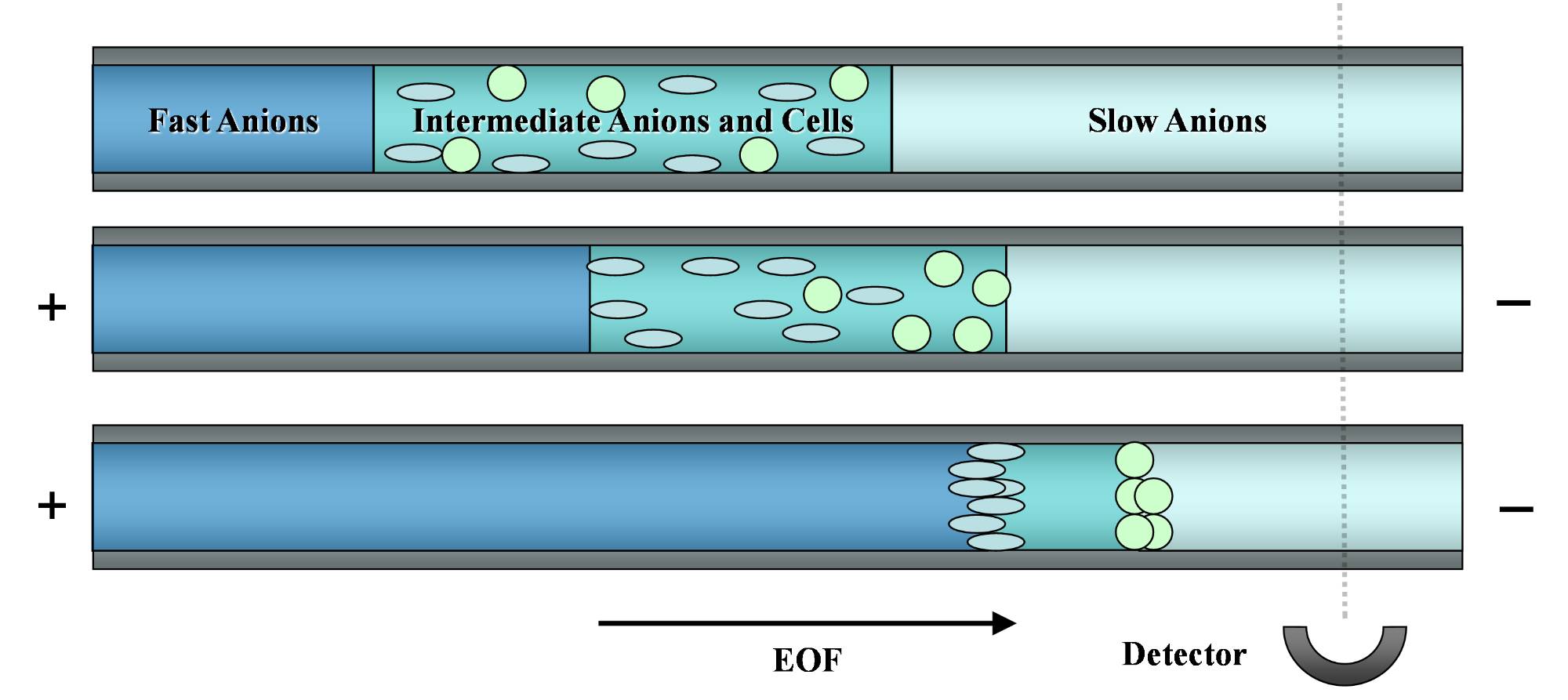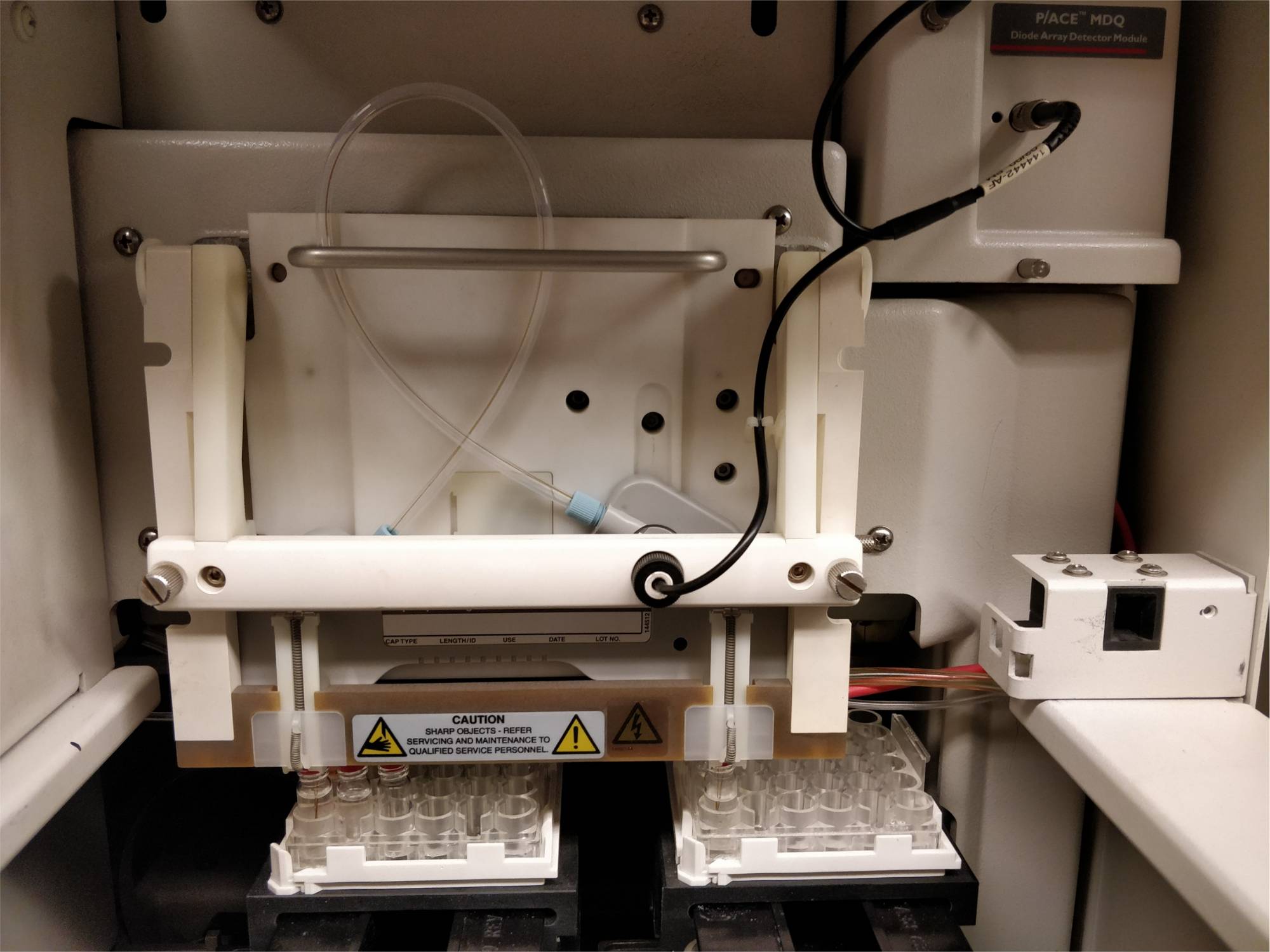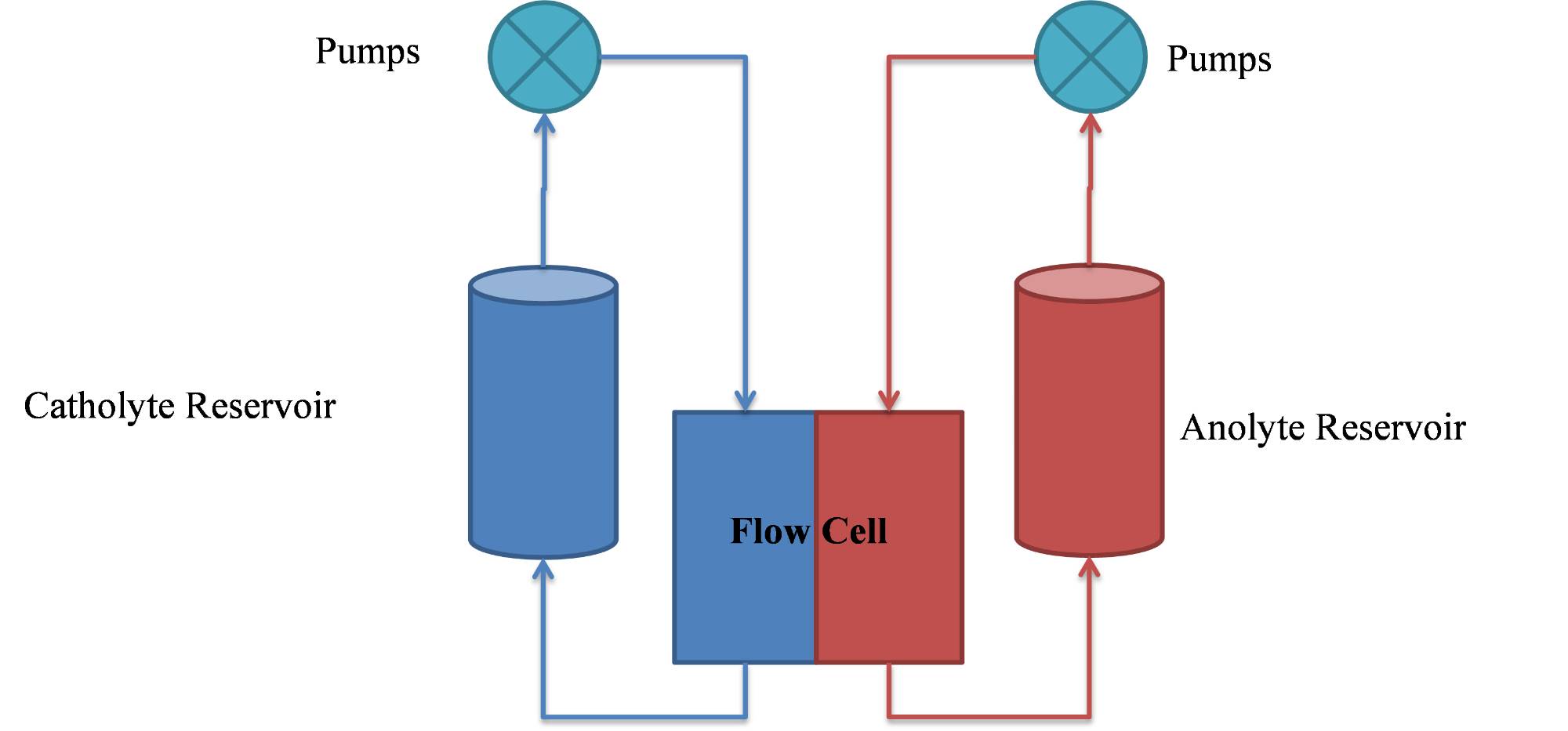Andrew Lantz Research Interests
Capillary Electrophoresis of Microorganisms:
Current methods for identifying bacteria and fungi contamination in food, water, and medical samples are lacking in numerous aspects- mainly time, cost, and detection ability. Many of these shortcomings may potentially be resolved using alternative techniques. One such technique gaining interest for the analysis of microorganisms is capillary electrophoresis. In capillary electrophoresis, analytes are separated within a small silica capillary filled with an aqueous buffer solution by an applied electric field. Our current work focuses on both the detection/quantitation of cells in a sample and also the physical separation of cells (by species or other physical properties) in a manner similar to that of a molecular chromatography separation. Several potential mechanisms are being explored for these separations including isotachophoresis (Figure 1), isoelectric focusing, and affinity cell sweeping. In these techniques, cells are separated either by the electrophoretic mobilities, isoelectric point (pI), or based on their interaction with a dissolved binding agent in the solution respectively. Following separation, the cells may then be detected as they are swept past a detector light beam near the outlet of the capillary.


Figure 1. First panel: Diagram of isotachophoresis focusing of cells in a fused silica capillary, Second panel: Image of capillary electrophoresis instrument.
Evaluation of Novel Flow Battery Electrolytes:
Redox flow cell batteries are a possible option in future, large scale energy storage systems. Because of the variable output of alternative energy sources (e.g., wind, solar) a means of mass energy storage is necessary for the power grid. In this research, we are developing and evaluating novel flow cell battery electrolytes, including fully organic electrolytes and organometallic complex electrolytes. Our lab has synthesized various novel organic quinone derivatives to modify their electrochemical characteristics and solubility, and we are also currently exploring various metal ion and organic ligand complexes. Cyclic voltammetry may be used to assess these compounds’ reduction potentials, redox reversibility, kinetics, and other electrochemical characteristics. Pairs of compounds that display large differences in reduction potential and show rapid electron transfer kinetics may be then chosen as potential electrolytes for testing in our prototype flow battery(Figure 2). These pairs are then tested over multiple charge and discharge cycles to assess their energy storage efficiency, current densities, and voltage discharge profiles.


Figure 2. First panel: Diagram of flow battery setup, Second panel: Image of flow battery test bed.
Select publications
Gordon, O., Gibbons, J., Lamp, J., & Lantz, A. (2024). Sorting and simultaneous quantitation of intact mixed-cell samples via capillary isotachophoresis. Electrophoresis, 45, 537-547.
Lantz, A., Shavalier, S., Schroeder, W., Rasmussen, P., & Lantz, A. (2019). Evaluation of an Aqueous Biphenol and Anthraquinone Based Electrolyte Redox Flow Battery. ACS Applied Energy Materials, 2(11), 7893-7902
Flaherty, R. J., Nshime, B., DeLaMarre, M., DeJong, S., Scott, P., & Lantz, A. (2013). Cyclodextrins as Complexation and Extraction Agents for Pesticides from Contaminated Soil. Chemosphere, 91, 912-920
Lantz, A., Bisha, B., Tong, M.-Y., Nelson, R. E., Brehm-Stecher, B. F., & Armstrong, D. W. (2010). Rapid Identification of Candida albicans in Blood by Combined Capillary Electrophoresis and Fluorescence in situ Hybridization. Electrophoresis, 31, 2849-2853
Lantz, A., Brehm-Stecher, B. F., & Armstrong, D. W. (2008). Combined Capillary Electrophoresis and DNA-FISH for Rapid Molecular Identification of Salmonella Typhimurium in Mixed Culture. Electrophoresis (29), 2477-2484
Lantz, A., Bao, Y., & Armstrong, D. W. (2007). Single Cell Detection: A Rapid Test of Microbial Contamination Using Capillary Electrophoresis. Analytical Chemistry (79), 1720-1724
Lantz, A., Pino, V., Anderson, J. L., & Armstrong, D. W. (2006). Determination of Solute Partition Behavior with Room-Temperature Ionic Liquid Based Micellar Gas–Liquid Chromatography Stationary Phases using the Pseudophase Model. Journal of Chromatography A (1115), 217-224
Lantz, A., Rodriguez, M. A., Wetterer, S. M., & Armstrong, D. W. (2006). Estimation of Association Constants Between Oral Malodor Components and Various Native and Derivatized Cyclodextrins. Analytica Chimica Acta (557), 184-190
Pino, V., Lantz, A., Anderson, J. L., Berthod, A., & Armstrong, D. W. (2006). Theory and Use of the Pseudophase Model in Gas-Liquid Chromatographic Enantiomeric Separations. Analytical Chemistry (78), 113-119
Lantz, A., Rohzkov, R. V., Larock, R. C., & Armstrong, D. W. (2004). Enantiomeric Separation of Neutral Hydrophobic Dihydrofuroflavones by Cyclodextrin-Modified Micellar Capillary Electrophoresis. Electrophoresis (25), 2727-2734
